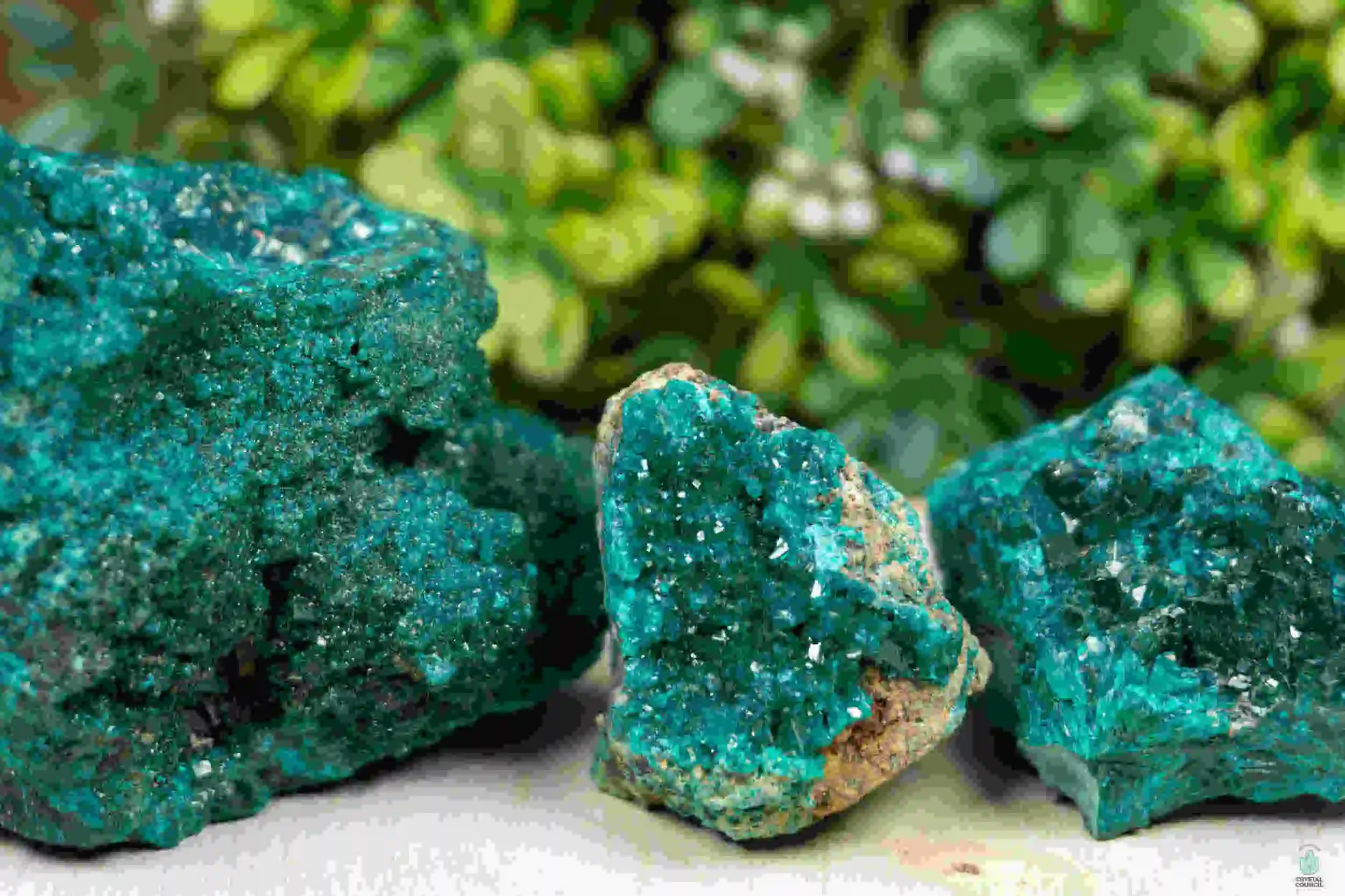Dioptase, a gem closely resembling the appearance of emeralds, sets itself apart with its high copper content, earning it the nickname “Copper Emerald.” Among the oldest natural stones in the world, significant extraction of dioptase only began in the late 18th century.
What Are the Benefits of Dioptase?
Dioptase, rich in copper, is known for its powerful energy. The benefits of dioptase include:
- Its ability to cleanse and balance the aura.
- It’s used to open up the heart chakra and is also recommended for the treatment of heart diseases.
- Actively used in treating headaches.
- Known as a stone of creativity, it actively strengthens consciousness, improving thinking and idea generation with noticeable positive outcomes shortly after use.
- Beyond balancing the heart chakra, it’s highly beneficial for those seeking spiritual balance.
- It supports those who struggle to forgive their past, aiding in becoming more forgiving and compassionate.
- Helpful for those overly attached to the past or future, encouraging living in the present moment.
- Has positive and healing effects on muscles and bones.
What Is Dioptase Good For?
Dioptase offers various physical and spiritual benefits. Those who have used dioptase report significant positive effects, finding relief for:
- Headaches
- Opening the heart chakra
- Bone and muscle pain
- Psychological relief
- Depression
- Unhappiness
- Attachment issues
What Does Dioptase Mean?
The meaning of dioptase originates from the Greek words dia and optos, meaning ‘through.’ This stems from its extraction process, often found with other natural stones yet distinctively identifiable, making its way ‘through’ to form dioptase.
What Are the Characteristics of Dioptase?
Dioptase, recognized for its striking similarity to the emerald in shape and color, possesses unique characteristics including:
- Its rarity, making it highly valuable and expensive.
- It belongs to the Chrysocolla group.
- It has a crystalline and transparent structure.
- It’s fragile, thus preferably used in its raw form rather than being processed.
- Its hardness is rated at 5.
How Can You Tell if Dioptase Is Real?
Given its value and rarity, dioptase is known to be expensive, and an unusually low price might indicate it’s not genuine. Another way to determine if dioptase is real is by its shape; due to its fragile nature, it cannot be easily molded into small forms like rings or earrings and is better suited as brooches or large necklaces.
How Should Dioptase Be Cleaned?
Cleaning dioptase is recommended with incense or salt, as it does not fare well with grounding or water due to its fragile nature. Those using dioptase should avoid grounding techniques to prevent potential damage to the stone.
